Nobody really “invented” the chair like we think of inventions today. It just sort of happened over thousands of years, changing as people and societies changed all around the world.
Key Takeaways
- No Single Inventor: Chairs weren’t created by one person; they developed slowly over thousands of years in different places.
- Evolution, Not Invention: The chair’s design changed alongside human history, reflecting shifts in society, technology, and culture.
- Early Status Symbol: In ancient times (like Egypt and Rome), chairs were often rare items showing power or high status, not common furniture.
- Mass Production Impact: Factories during the Industrial Revolution made chairs much more common and affordable for everyday people.
Table of Contents
Introduction
Have you ever just plopped down in a chair and thought, “Wait a minute, where did this thing come from? Who thought this up?” It feels so basic, like it’s always been here. But finding the “inventor” of the chair? It’s not like finding the inventor of the phone. There’s no one person we can point to. The chair’s story is more like a really, really long evolution. It started super simple and slowly became the huge variety of seats we have now. It’s a story about how people lived, who had power, what materials they had, and what looked good back then. So, let’s try to unravel this history.
Sitting Down: The Basic Need
Way back, before proper houses even, where did people sit? Probably just on the ground. Or maybe a handy rock or a fallen log. The need to rest, to get off your feet, is ancient. Early “seats” weren’t designed; they were just found. Maybe the very first made seats were simple stools – just a flat top, maybe three or four legs. Easy to make, easy to use. They popped up in lots of early cultures. The idea of raising yourself off the ground came way before fancy chairs with backs and arms.
Early Big Societies: Chairs Mean Power!
When big civilizations started forming, like in Egypt and Greece, seating started getting fancier. But it wasn’t usually for everyone.
Ancient Egypt Thousands of Years Ago
Check out pictures from Ancient Egypt (we’re talking 5,000 years back!). You’ll see chairs, real ones. But look closely – they belonged to the Pharaohs, the super important officials, the really rich folks. These chairs were often works of art – fancy wood, carvings, gold bits, ivory. Think King Tut’s throne. They screamed, “I’m important!” Regular people? They mostly used simple stools or just sat on the floor or benches. Egyptian chairs often had legs shaped like animal legs and sometimes low backs.
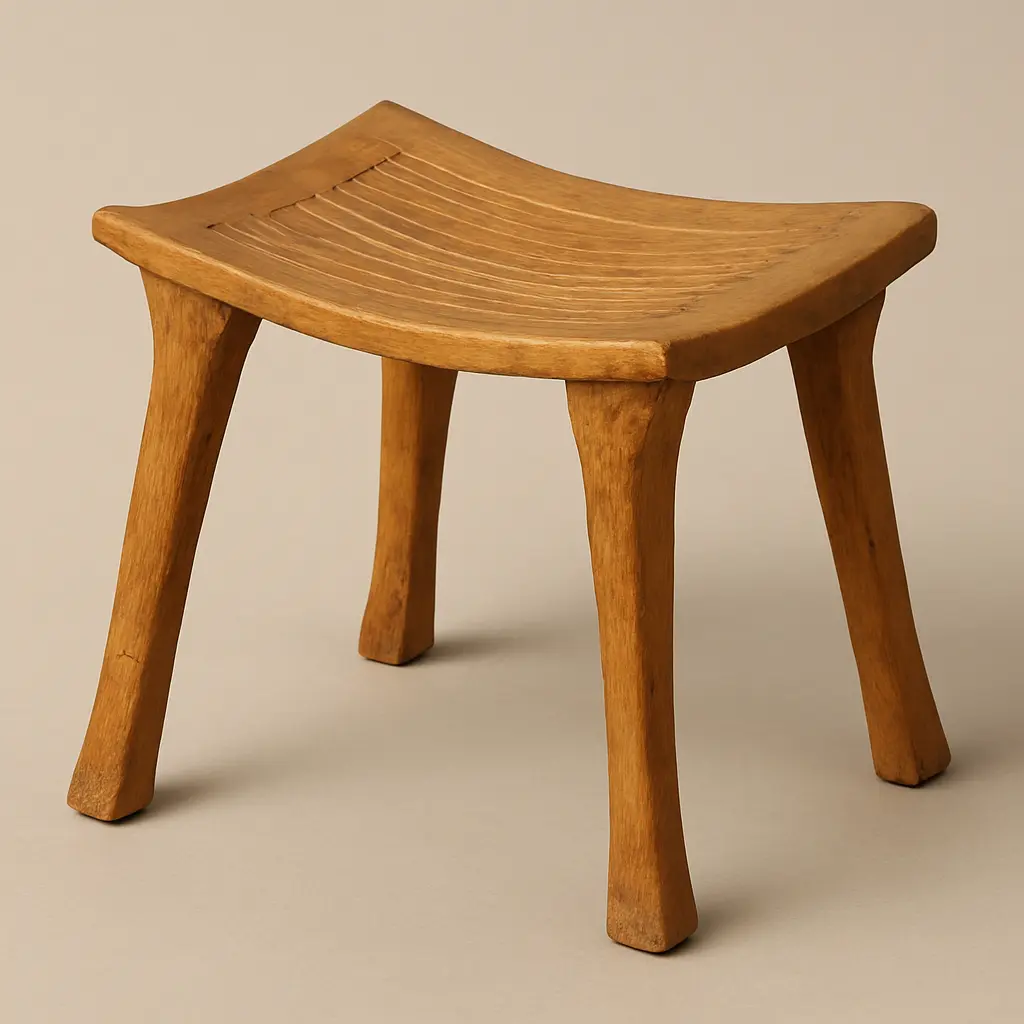
Ancient Greece: Getting Stylish
The Greeks had their own ideas. Stools were still common, but they came up with some cool chair designs. The famous one is the Klismos. You see it drawn on old pottery. It had legs that curved outwards and a curved back. People think it looked pretty elegant and was maybe more comfortable than the stiff Egyptian chairs. It shows they started thinking about looks and maybe comfort, not just power. But still, not everyone had one.
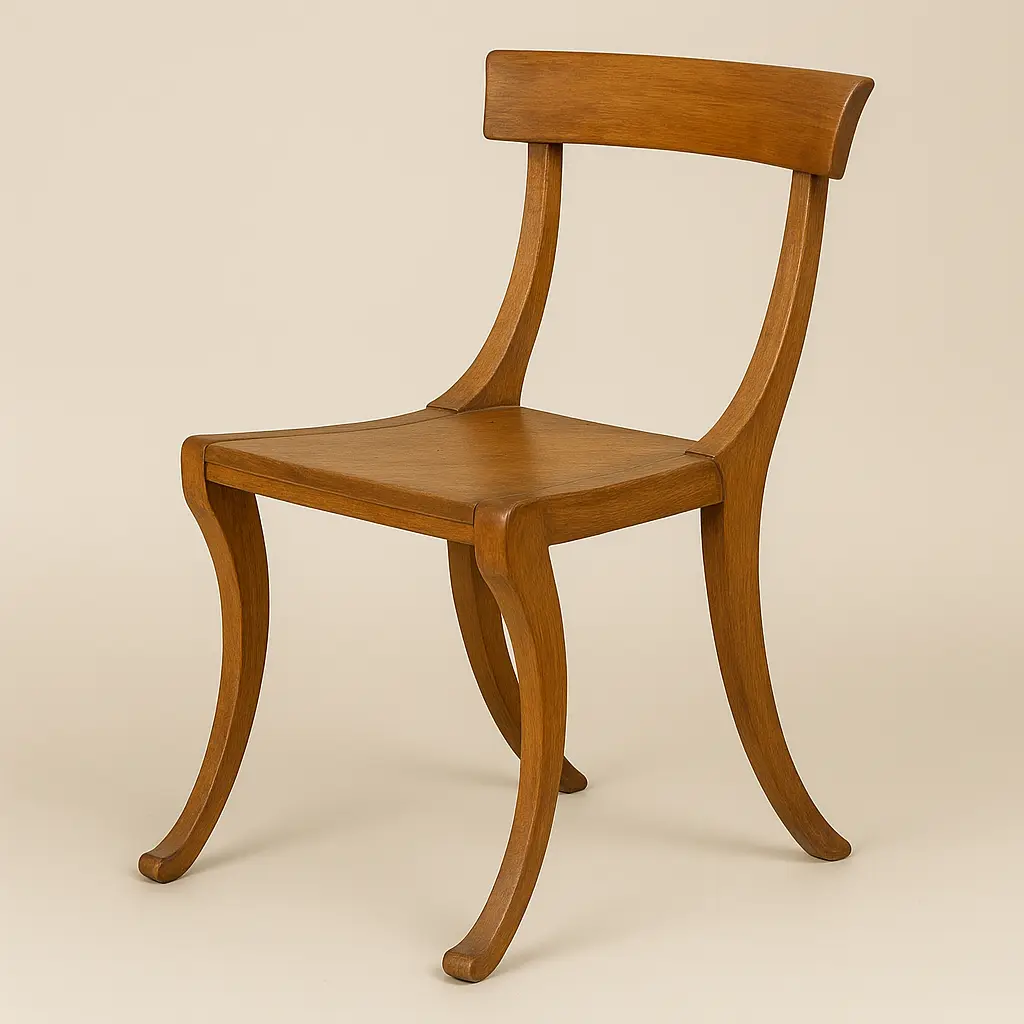
Ancient Rome: Borrowing and Building
The Romans took ideas from the Greeks and Egyptians. They had all sorts of seats – stools, benches, folding chairs for army commanders, fancy marble thrones for emperors. Like before, what you sat on often showed how important you were (or weren’t).
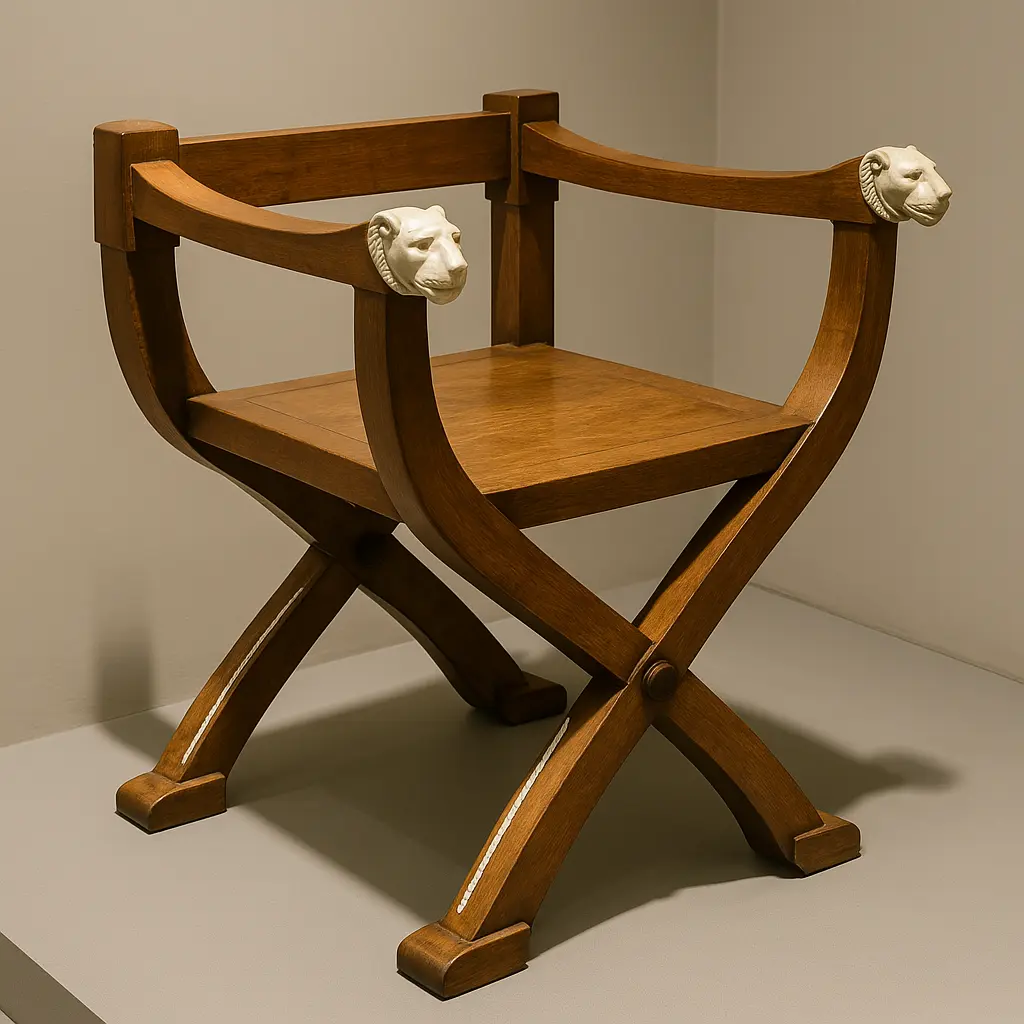
Through the Middle Ages: Less Common Again
Things changed in Europe during the Middle Ages. For most folks, chairs kind of disappeared again. Benches and stools were easier to make and better for sitting together around a table. Fancy chairs were still around, but mainly for kings, queens, and top church leaders. These were often huge, heavy, carved wooden things, almost like boxes with high backs. They definitely looked important, but probably weren’t very comfy! The idea of the “head of the table” sitting in the only chair comes from this time – the “chairman.”
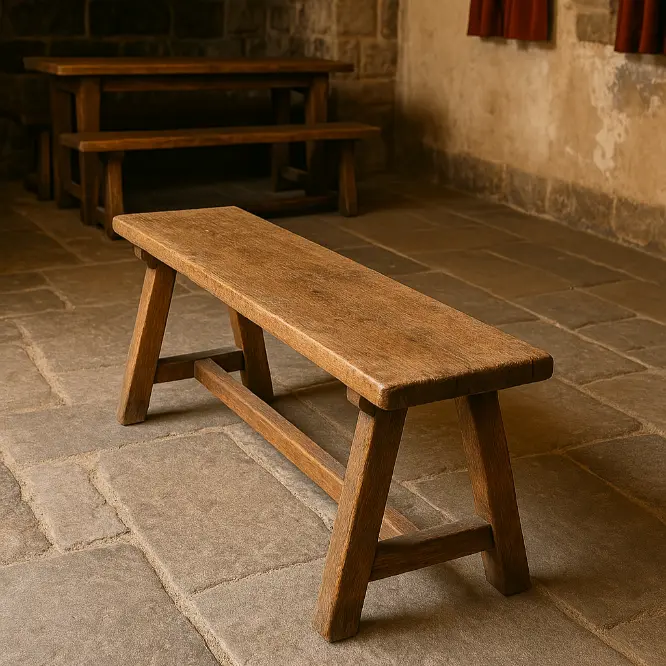
A New Awakening: Renaissance and Fancy Styles
When the Renaissance kicked off (think 1400s, 1500s), art and making things got a big boost. Furniture, including chairs, got more attention.

Chairs Become More Common (for Some)
They started showing up more in homes of wealthy merchants and nobles, not just castles. Designs got fancier. Woodworkers showed off their skills with detailed carvings. Armchairs got more popular. People started adding cushions and upholstery with nice fabrics or leather, making chairs way more comfortable.
Famous Styles Appear
Later on, especially in the 1600s and 1700s, we start seeing specific styles of chairs named after kings (like Louis XIV) or famous furniture makers (like Chippendale). Chairs became a big part of how rooms were decorated. Making them was still a skilled craft done by hand, so they were expensive.
Factories Change Everything: The Industrial Revolution
The biggest shift happened with the Industrial Revolution (late 1700s through the 1800s).
- Making Lots Quickly: New machines meant factories could pump out chair parts much faster and cheaper. Things became more standardized.
- New Ways to Make Them: People figured out tricks like steam bending wood. Michael Thonet used this to make his famous simple cafe chairs that were strong and easy to produce. Metal (like cast iron) also started being used.
- More People Could Buy Them: Slowly but surely, chairs stopped being just for the rich. More ordinary middle-class families could start affording them. The chair started becoming less of a luxury and more of an everyday thing.
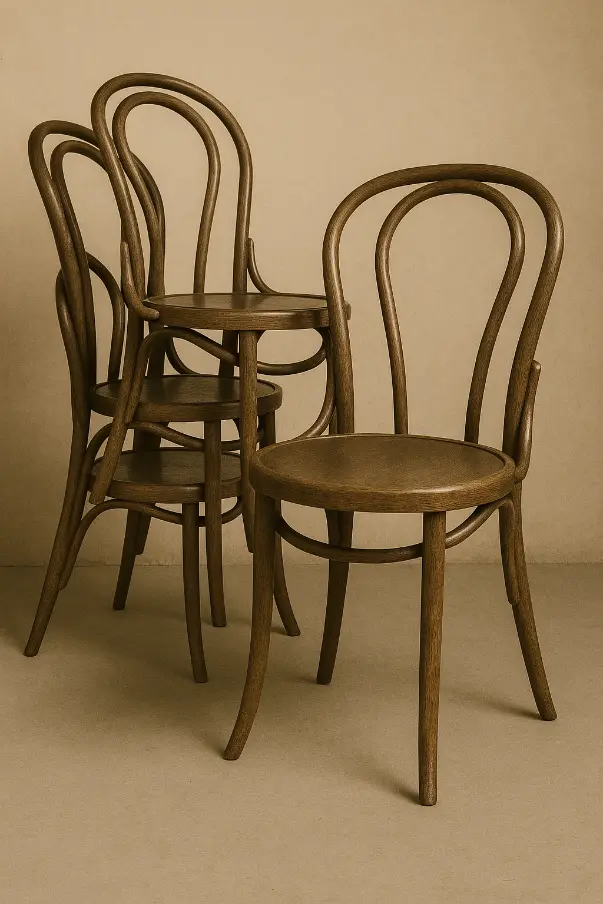
Modern Times: So Many Chairs!
The last hundred years or so? Chair design just exploded. New ideas, new materials, and new ways of thinking took over.

Design Gets Serious
Big design movements changed how chairs looked and were made. Think of Bauhaus in Germany (“keep it simple and useful”), or the curvy, cool look of Mid-Century Modern furniture. Designers really started thinking about ergonomics – how to make chairs fit human bodies better for comfort and health.
Trying New Stuff
Designers got their hands on new materials like molded plywood, plastic, tubular steel, aluminum. This let them create shapes and forms that just weren’t possible with solid wood alone.
Chairs We Still Know Today
This era gave us tons of “famous” chairs you might still see around (or replicas of them). Think of designs by Charles and Ray Eames, or sleek Scandinavian styles. Sometimes the goal was art, sometimes perfect comfort, sometimes making something affordable for everyone. Today, designers also think a lot about using sustainable materials.
So, Back to the Question: Who Invented It?
Okay, after all that history, can we name an inventor? Nope!
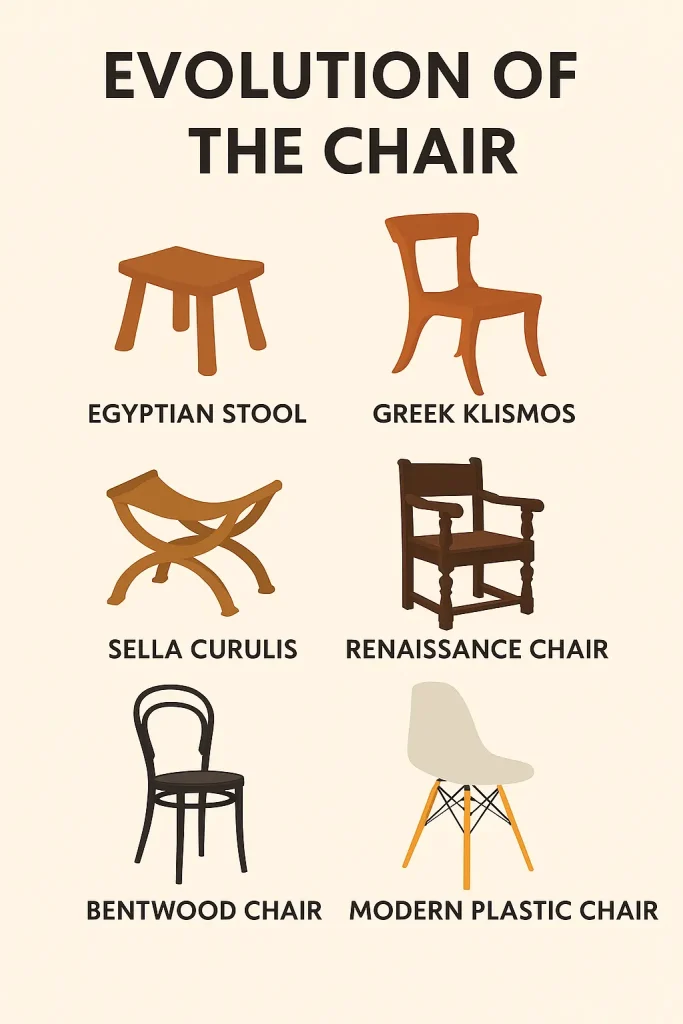
It wasn’t one person. It was a slow process, driven by basic needs, changing societies, new technologies, and ideas about style and status.
- It started with just needing a place to rest off the cold, hard ground.
- Early kings and queens used fancy seats to show they were in charge.
- Craftspeople over centuries made them more beautiful and comfortable.
- Factories finally made them affordable for lots more people.
- Modern designers keep playing with shape, materials, and how we sit.
Think of all the unnamed people over thousands of years who shaped a log just right, figured out how to join legs securely, added a supportive back, or tried a new material. They all played a part.
Conclusion: More Than Just a Place to Sit
The chair seems simple, but its story is really the story of people. It shows how we lived, who had power, what we thought was beautiful, and what tools we had. From a basic stool to a high-tech office chair, every seat has a bit of that long history baked into it. So, the next time you take a seat, remember it wasn’t just invented – it grew up alongside us. Pretty cool for something we use every day without much thought!



